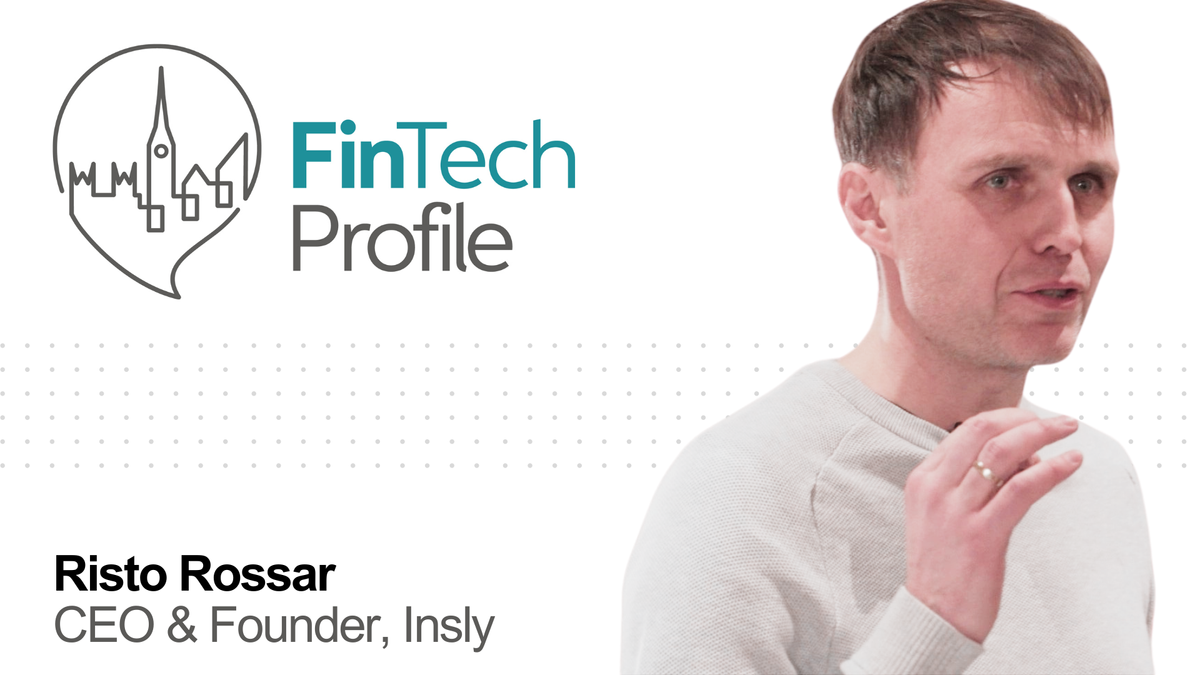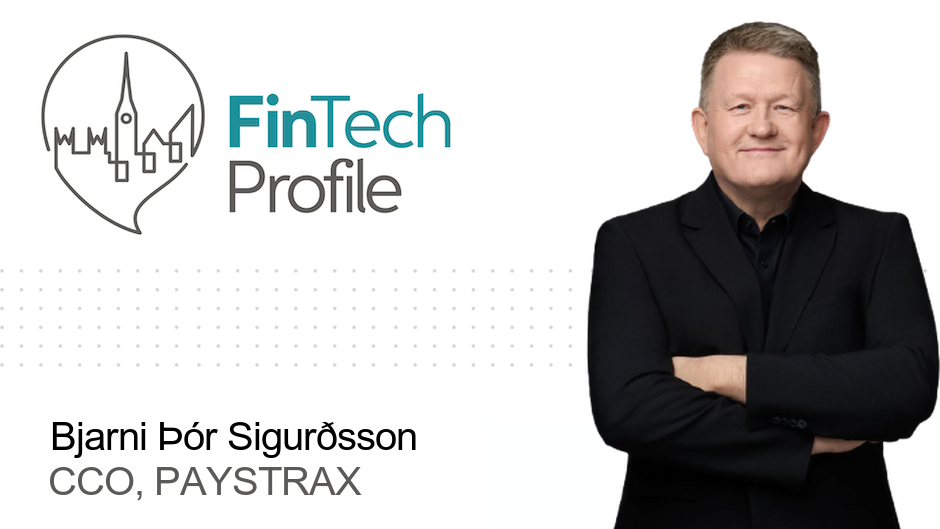Risto Rossar, CEO & Founder, Insly

Today we’re meeting Risto Rossar, the CEO & Founder of Insly, the low-code, full-cycle platform helping MGAs (“managing general agents”) and insurers to run more profitable insurance operations at scale.
Over to you Risto…
Who are you and what’s your background?
Estonian born and raised, I am an insurance innovator and investor and have been in the insurance industry for 20 years, founding five insurtech startups. I attended Estonian Business School and founded my first insurance business in 2000; IIZI, believed to be the first digital insurance broker in the world. IIZI started operating in the Baltic states before expanding to Finland and becoming the largest insurance intermediary in those regions. Later, spotting the opportunity to deliver technology to the insurance industry, I sold the broker business and spun out the technology platform and team, which served as the foundation for Insly.
What is your job title and what are your general responsibilities?
I am the founder and CEO of Insly, so I lead the strategic direction of the business. I am less involved in day-to-day delivery than in previous years, and my focus now is on fundraising, liaising with investors, identifying new opportunities in the market, and considering how best to accelerate our growth and scale the business successfully. This includes bringing in key hires to build out different functional areas and mentoring and supporting the executives of Insly’s different business units.
Can you give us an overview of your business?
Insly helps MGAs (managing general agents) and insurance companies to deliver better products, service, and profitability through flexible low-code software.
Insly’s products are built on deep insurance and technology expertise, designed around the exact needs of MGAs and insurers, which means that implementation is fast and straightforward. Modules span the entire insurance lifecycle, enabling MGAs and insurers to build a system that fits their evolving needs, while integrating seamlessly through open APIs.
Improved workflows and automation mean Insly customers can handle on average double the gross written premium (GWP) as with their previous systems, while gaining superior business visibility and insights.
Our growth trajectory speaks for itself. Over the last ten years, Insly has grown to a team of 100, with offices in Tallinn (core development unit), London (HQ), Vilnius, and Warsaw. We serve over 1,000 brokers, MGAs, and insurers, with over 15,000 individual users and over €0.5bn gross premiums transacted on the platform. Our customers span 52 countries around the globe and in 2024, we have reached an €8 million annual revenue run rate and achieved profitability.
Tell us how you are funded?
Insly has raised four rounds of funding, encompassing venture capital and venture debt:
- In 2015, we raised a pre-seed round of €1.3m, involving myself and my IIZI partners and investors.
- In March 2018, we raised €2.1m of seed investment involving Concentric, Black Pearls, and Uniqa Ventures, plus ongoing support from our early backers.
- In September 2022, we secured an additional €2.3m in funding with contributions from new and returning investors, including a syndicate from FFF Ventures.
- In November 2023, we raised €1.7m in venture debt from Hambro Perks.
What’s the origin story? Why did you start the company? To solve what problems?
During my time building IIZI, the digital insurance broker, I noticed that insurance companies were operating with a tangle of legacy IT, or no systems at all, and I knew our technology could help them address that.
Insurance involves numerous complex and specific processes, which are difficult, if not impossible, to automate using generic products. Insly evolved from an insurance company, so we understood the lifecycle and challenges, and built a product suite entirely tailored to how they work. We initially launched with an SaaS solution for brokers, before developing a platform for MGAs and insurance companies.
Then, as we grew our biggest challenge was working out how to customise our software to meet each customer’s specific needs, without losing the “one product” principle, or compromising speed or software stability. It was this that led us to develop low-code software, launched in 2022, taking a modular approach to suit a wide variety of customer needs.
Our low-code platform is customisable and easily configurable, reducing the need for maintenance and costly development talent. This has helped us to reduce our implementation time and cost by a factor of ten and seen Insly evolve from an IT services company to where we are today – an independent standard-setting product.
Who are your target customers? What’s your revenue model?
Our low-code platform is primarily targeted at insurance MGAs and insurers. We charge based on set-up fees to configure the system, and then on license fees for the number of users and amount of business transacted on the platform.
We also have a solution aimed at insurance brokers, Brokerflow, which helps them to digitise and streamline the sales process. Brokerflow is a subscription model based on user numbers.
If you had a magic wand, what one thing would you change in the banking and/or FinTech sector?
If I had a magic wand, I would transform the banking and FinTech sector by phasing out traditional banks and central banking systems. I believe this change would significantly reduce corruption and theft within the financial and government system. In place of the old system, I envision establishing a new, transparent financial system founded on principles of sound money. This new system would likely adopt a decentralised standard, such as a bitcoin standard, promoting greater integrity and honesty in financial transactions. This shift could encourage more equitable economic growth and innovation across the sector.
What is your message for the larger players in the Financial Services marketplace?
I would encourage them to read more works of free market economists like Ludwig von Mises, Murray Rothbard, and Friedrich Hayek and think about how to implement their ideas into our economy.
Where do you get your Financial Services/FinTech industry news from?
X (Twitter) and YouTube.
Can you list 3 people you rate from the FinTech and/or Financial Services sector that we should be following on LinkedIn, and why?
- Lyn Alden, an independent analyst who provides institutional-level research for both institutional investors and retail investors. Her book Broken Money explores the past, present, and future of money through the lens of technology.
- Dr. Saifedean Ammous is an internationally best-selling economist and author who has written several books on economics and bitcoin. He also hosts The Bitcoin Standard podcast.
- Michael Saylor is an entrepreneur and business executive. He is the executive chairman and co-founder of MicroStrategy, and an advocate of bitcoin.
What FinTech services (and/or apps) do you personally use?
- Ledger is a hardware wallet and crypto wallet, which stores your private keys in a secure, offline environment.
- Wallet of Satoshi is a mobile app that lets you send and receive Bitcoin and Lightning payments.
- Kraken is my preferred cryptocurrency exchange, due to the breadth of its products and services.
What’s the best new FinTech product or service you’ve seen recently?
Unchained is a bitcoin native financial services company offering collaborative custody multi-signature vaults and loans for bitcoin holders.
Finally, let’s talk predictions. What trends do you think are going to define the next few years in the FinTech sector?
This is pivotal year for cryptocurrency, but more specifically bitcoin, which underwent an impressive bull run in the first quarter of the year. In January, the United States Securities and Exchange Commission (SEC) approved Bitcoin ETFs, enabling institutions to start investing in bitcoin. Plus in April, there was a Bitcoin halving, meaning that the supply of new Bitcoin was cut by half.
Both these developments have implications for fintech and insurtech, bringing new opportunities for more bitcoin and crypto-based products and services. For example in the insurance space, there is increased demand for insurance on bitcoin and related transactions and we will see a range of products start to emerge covering a range of risks, including theft, loss due to hacking, and perhaps even market volatility in the case of stablecoins.
AI is also revolutionising what is possible for fintech and insurtech. First, it will make IT development and implementation much cheaper, as the work of 20 can now be done by one or two. Here at Insly, we’re pioneering generative AI solutions whereby, upon uploading product specifications into the Insly AI system, it can autonomously configure the system within minutes or even seconds. This approach can vastly accelerate implementations and reduce costs. Furthermore, once set up, users can interact directly with the system, making modifications with simple commands, transforming a form layout, or converting a form interface into a chatbot.
AI’s next frontier is automating the internal processes of financial services and insurance companies. From sales and support to claims handling and finance, virtually every facet of an insurance company can be overseen by AI. It’s conceivable that, in the future, a single AI might manage the entire operations of an insurance firm. While a complete transition might seem distant, we are making incremental advancements. Several areas are already under trial, and the results are promising.
At a macro level, I believe that a ‘perfect storm’ of economic challenges could come to a head in 2024, including the potential failure of more banks and unsustainable levels of government debt, which is only realistically manageable through further inflation. Fintechs must therefore be prepared for worst-case scenarios and how these could impact their business throughout the year.
Risk management could include diversification to mitigate against potential risks. But with risk also comes opportunity, and smart businesses will be on the lookout for gaps in the market for product innovation. A proactive approach to digitisation and incorporating emerging technologies will be vital in navigating the uncertainties and potential systemic risks of the macroeconomic landscape.
Absolutely fantastic. Thank you so much for taking the time to participate Risto.
You can find Risto on LinkedIn here: Risto Rossar — and you can learn more about Insly here: https://insly.com/.




